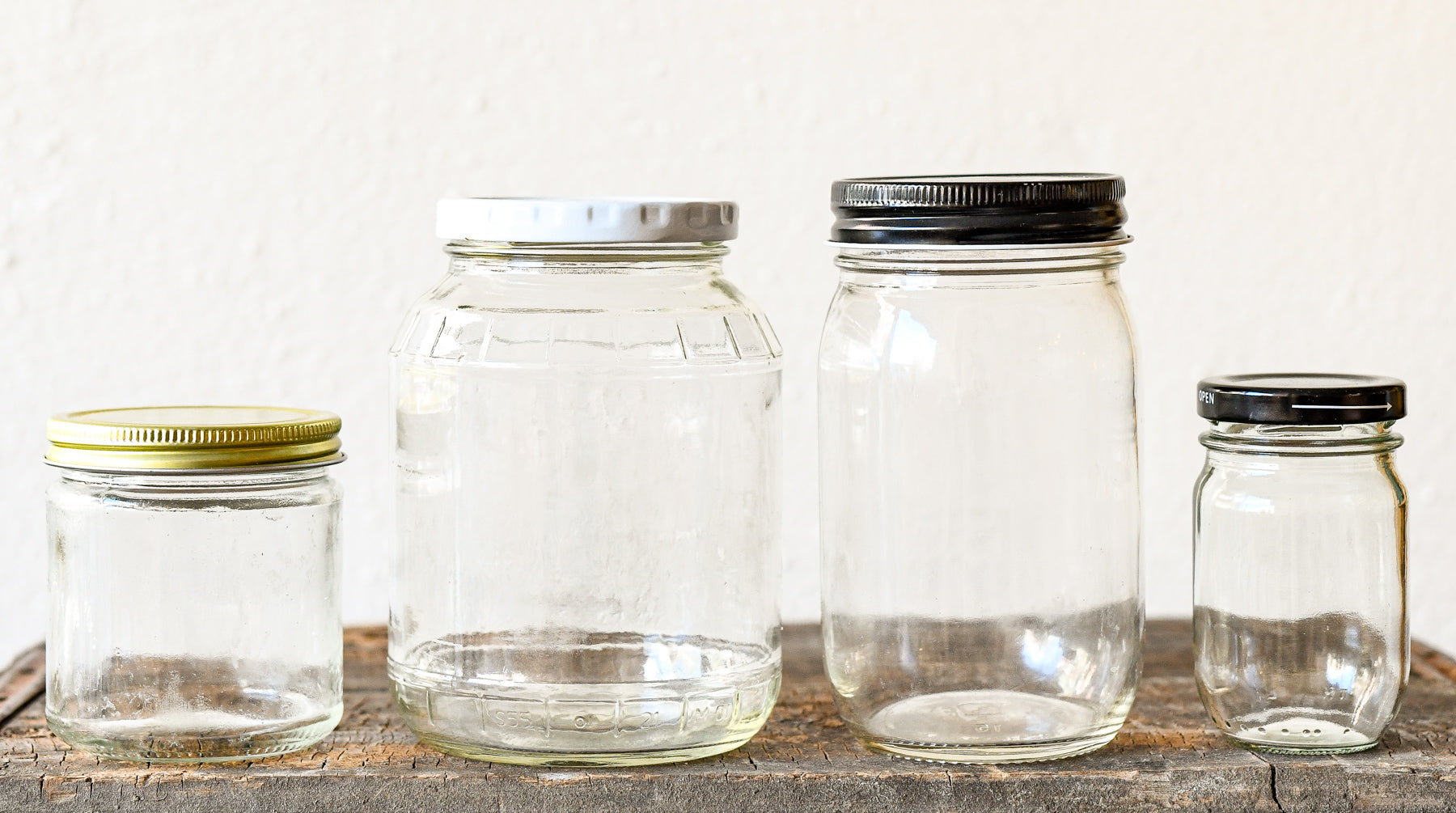
Cleaning Up Your Glass Jars for Reuse
The Plan of Attack
1. Soak
After glasses are formed, many are then reheated so the label (typically vinyl) will properly bond & mould to the glass. This creates a nearly weatherproof label, which is great for single-use, but can be a real b**** if you're wanting to reuse the jar and actually be able see the contents. So, it makes sense that heat is a major component when it comes to removing these finicky labels.
Depending on the label and adhesive, one of two options should remove the bulk of it: 1) For paper labels, place your rinsed out jar in a hot (or just-boiled), soapy bath of water and let sit for a few hours. Or 2), for tough vinyl labels, boil enough water to fill the jar above the top of the label, and pour it directly into the jar. Wait 20 seconds or so, and carefully pull the label off. Be sure to use a pot holder or similar to protect the hand holding the glass jar of scalding water.
2. Scrape
It's likely you still have some amount of label or adhesive remaining on your jar after the initial peel. If the label is paper-based, it will require a little more patience - longer soaking & more scraping.
Now it's time to give the labels a good scrape. We recommend a Pot Scraper, as it won't damage the glass and isn't a safety hazard. Even butter knives get dangerous with enough pressure behind them, but they're a good backup, if that's all you've got handy.
**Be sure to scrape your jar away from the sink so the pieces of label can properly be disposed of (in the trash). Please don't send plastics down the drain for a clean jar!**
3. Scrub
The majority of your label should be removed at this point, with just some sticky adhesive remaining where the label was. Here, you've got a few options for what scrubbing agent you choose to use. Many people swear by lemon essential oil. We personally have acetone/nail polish remover at home, so that's what we tend to gravitate toward and have found to be extremely effective. Another option is to make a paste out of olive oil & baking soda. If you've already got Goo Gone around the house, that'll work too.
For all of those methods, be sure your glass is completely dry before applying. Otherwise, the adhesive will end up just getting spread around. Grab an old terrycloth rag, load with choice of scrubbing agent, and scrub away at the adhesive until it disintegrates. Once your jar meets your ideal clarity, give it a good wash to ensure none of the scrubbing agent got inside/will transfer to the future contents.
Now bring your jar to us, the Co-Op, or wherever it is you buy in bulk, and fill it up! Pro tip: Keep the tare value of your jar handy by writing directly on your jar with an oil pencil, Sharpie-ing the lid, etc. to avoid having to weigh it each time!
Stinky Lids?
If your jar's first life involved anything particularly pungent (candle, garlic, onions, etc.) you may find that no amount of washing does much to affect the smell. But you know who will take care of that for you? The sun. You need several hours (and sometimes up to a two days) of full, direct sunlight to zap smells from most materials. We recommend leaving your stubborn lids outside in a sunny spot for one or two days. This also works wonders for silicone storage products like Stasher Bags and Food Huggers, FYI.
Not familiar with our Refill Station, or need a refresh? Check here for our most up-to-date offerings.

Comments
Leave a comment